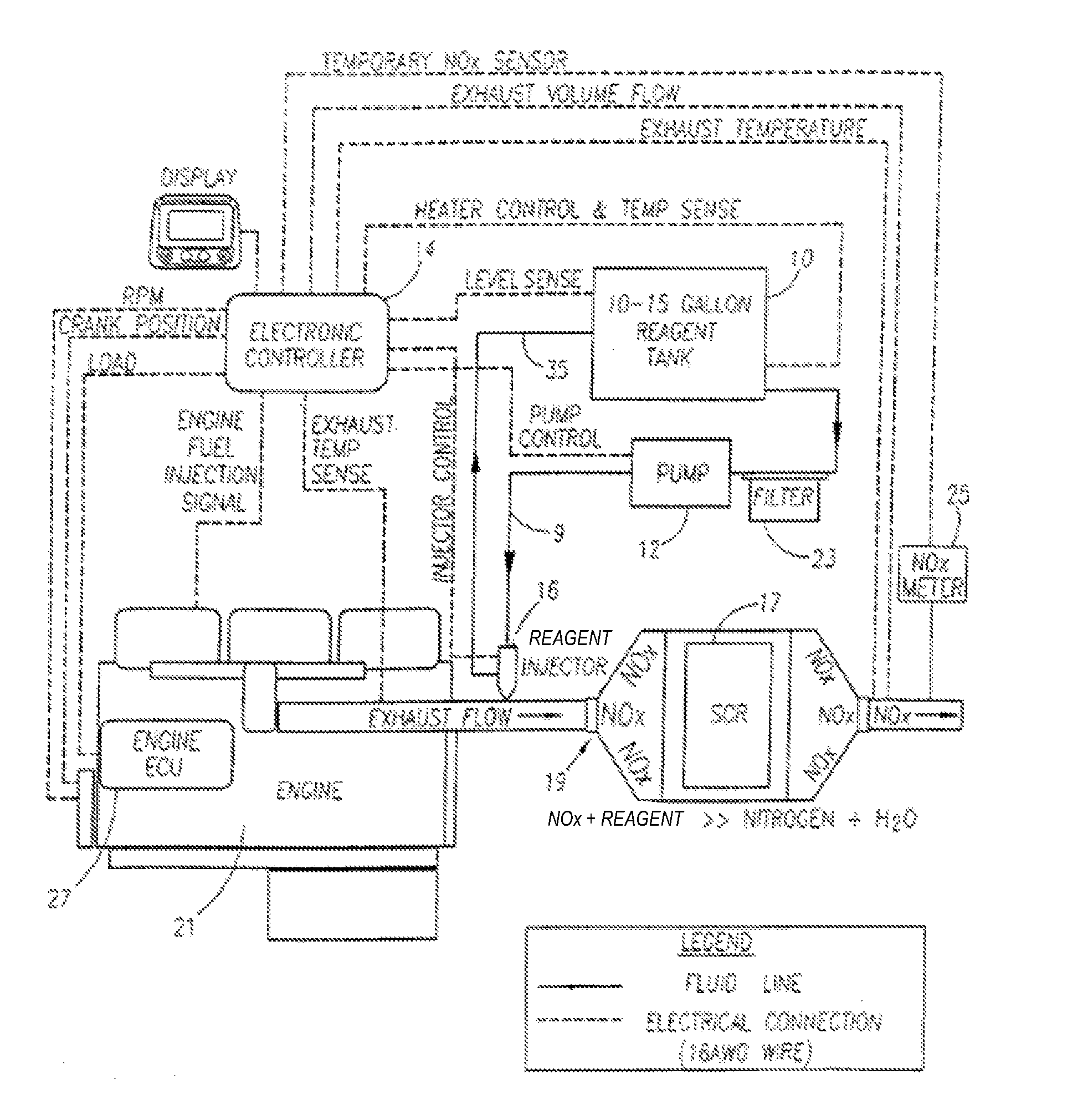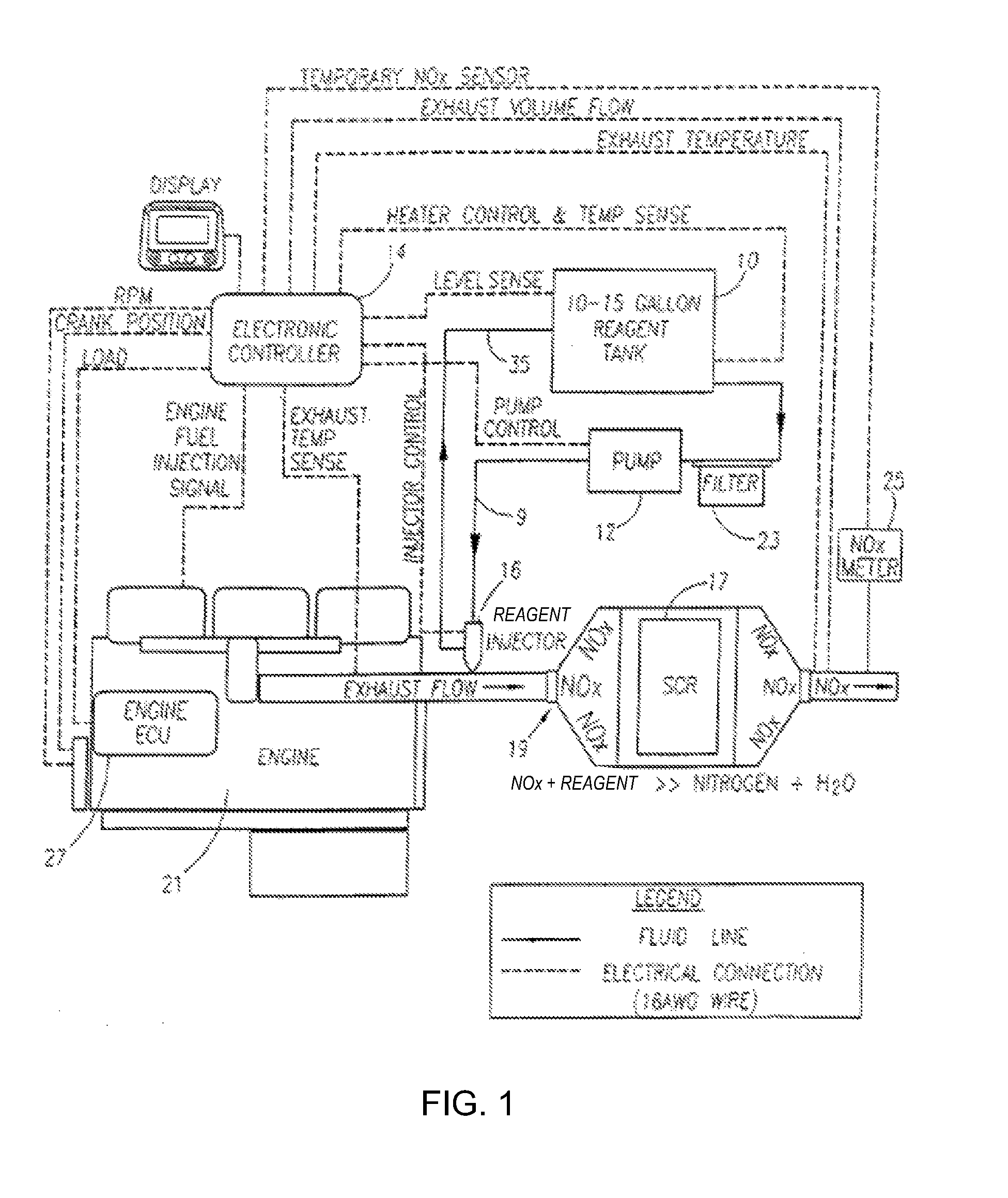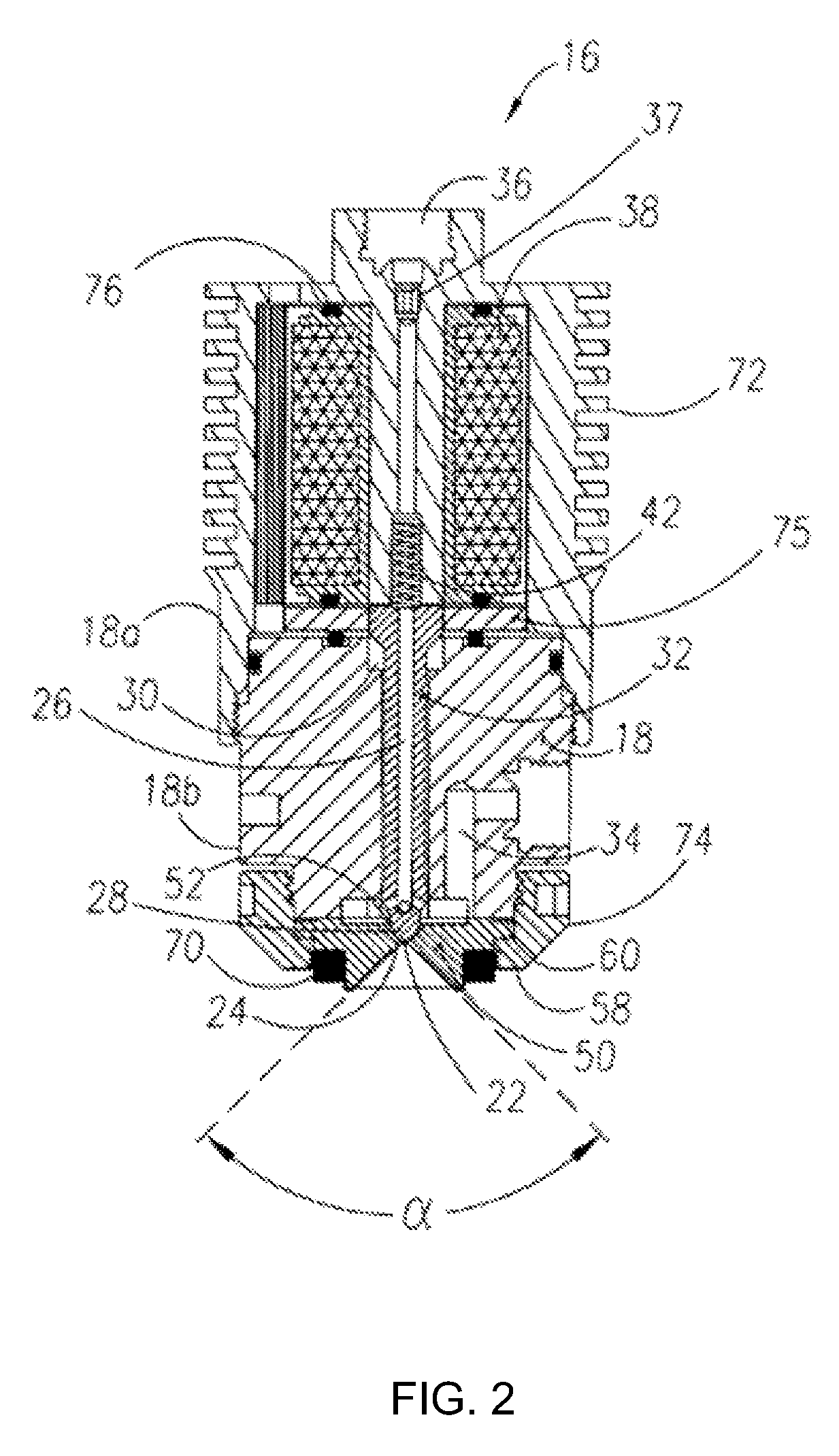Method and apparatus for reducing emissions in diesel engines
a technology for diesel engines and emissions reduction, applied in mechanical equipment, machines/engines, applications, etc., can solve the problems of increasing fuel economy, affecting the performance of diesel engines, and affecting the operation of diesel engines, etc., to achieve the effect of reducing emissions from diesel engines
- Summary
- Abstract
- Description
- Claims
- Application Information
AI Technical Summary
Benefits of technology
Problems solved by technology
Method used
Image
Examples
Embodiment Construction
[0027]The ensuing detailed description provides exemplary embodiments only, and is not intended to limit the scope, applicability, or configuration of the invention. Rather, the ensuing detailed description of the exemplary embodiments will provide those skilled in the art with an enabling description for implementing an exemplary embodiment of the invention. It should be understood that various changes may be made in the function and arrangement of elements without departing from the spirit and scope of the invention as set forth in the appended claims.
[0028]The present invention provides a low flow rate injector for diesel emissions control, and methods for injecting a reagent at low flow rates.
[0029]The present invention achieves lower flow rates in a commercial injector of the type disclosed in commonly owned co-pending U.S. patent application Ser. No. 11 / 112,039 entitled Methods and Apparatus for Injecting Atomized Fluid, filed on Apr. 22, 2005 (U.S. Published Application No. 2...
PUM
| Property | Measurement | Unit |
|---|---|---|
| diameter | aaaaa | aaaaa |
| inlet pressure | aaaaa | aaaaa |
| inlet pressure | aaaaa | aaaaa |
Abstract
Description
Claims
Application Information
 Login to View More
Login to View More - R&D
- Intellectual Property
- Life Sciences
- Materials
- Tech Scout
- Unparalleled Data Quality
- Higher Quality Content
- 60% Fewer Hallucinations
Browse by: Latest US Patents, China's latest patents, Technical Efficacy Thesaurus, Application Domain, Technology Topic, Popular Technical Reports.
© 2025 PatSnap. All rights reserved.Legal|Privacy policy|Modern Slavery Act Transparency Statement|Sitemap|About US| Contact US: help@patsnap.com



